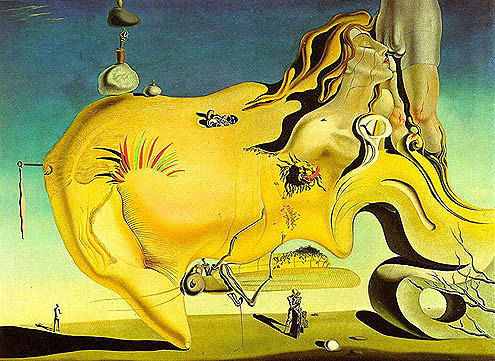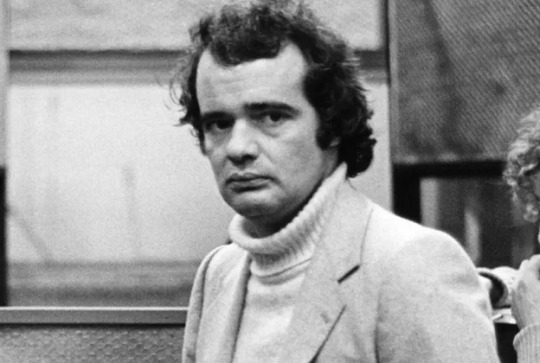#Federico P.
Text

Federico García Lorca, from "3 Tragedies; Blood Wedding, Yerma, Bernarda Alta,"
2K notes
·
View notes
Text




federico bernadeschi
10 notes
·
View notes
Text
[Illuminosa Tarantina][Roberto Delle Cese]
Con tono vivace, spregiudicato, ma sempre autentico e coinvolgente, il testo racconta la biografia di Carmelo Cosma – ovvero, la Tarantina – uno dei più famosi “femminielli”, vissuto tra la Napoli dei Quartieri Spagnoli e la Roma de La dolce vita.
Con tono vivace, spregiudicato, ma sempre autentico e coinvolgente, il testo racconta la biografia di Carmelo Cosma – ovvero, la Tarantina – uno dei più famosi “femminielli”, vissuto tra la Napoli dei Quartieri Spagnoli e la Roma de La dolce vita. Protagonista di una vita intensa e spericolata, Tarantina conosce povertà e umiliazioni, ma anche momenti di notorietà, entrando in contatto con…

View On WordPress
#Alberto Moravia#Brigitte Bardot#C&P Adver Effigi#Carmelo Cosma#effegi#Federico Fellini#fiction#Goffredo Parise#Il romanzo di un femminiello napoletano#Illuminosa Tarantina#Italia#La dolce vita#La Tarantina#LGBT#Marina Ripa di Meana#narrativa italiana#Pier Paolo Pasolini#Roberto Delle Cese
0 notes
Text
Cento anni di Pier Paolo Pasolini

View On WordPress
0 notes
Text
Recensione: "Limes 11/22 America?"
Recensione: “Limes 11/22 America?”
Buongiorno a tutti sono Elena e grazie di essere su Life is like a wave who rises and falls. Oggi vi parlo dell’ultimo Limes.
Limes 11/22 America?
Gruppo Editoriale Gedi, 2022
ISBN: 978-8883719998, 300 pp.
Il numero indaga la crisi d’identità interna agli Stati Uniti. I litigi su armi e aborto, l’aumento della violenza, la crescente intolleranza che blocca la politica sono sintomi…

View On WordPress
#Agnese Rossi#Carlo Pelanda#Edoardo Boria#Elia Morelli#Fabrizio Maronta#Federico Petroni#Francis H. Buckley#George Friedman#Giacomo Mariotto#Giuseppe De Ruvo#Greta Cristini#Gruppo Editoriale Gedi#Herfried Münkler#Jacob Ware#James C. Cobb#Jeremi Suri#Kenneth J. Heineman#Kenneth P. Miller#Letteratura Italiana#Letture del 2022#Limes#Lorenzo Di Muro#Lorenzo Noto#Lucio Caracciolo#Matt McCaw#Mauro De Bonis#Michael Beckley#Niall Ferguson#Nicolas Lozito#Orietta Moscatelli
0 notes
Text
[T]hey frequently transgress the spatial boundaries imposed by humans to organize and govern spaces […]. [W]etlands spread out and do not conform to the straight and consistent lines between land and water. […] The smells of wetlands, of decomposing vegetation, of sulphur, were […] off-putting for [British] settlers in Aotearoa […]. Soon after the British-led military invasion of the Waikato region in 1863 and the confiscation of 480 000 ha of Maori lands, [...] [t]he ‘great swamp region of the Waikato’ was described as a picture of ‘desolation’ and ‘stagnant water’ where the ‘ground quaked and quivered beneath’ one's feet, and opened up unexpectedly to suck people down into ‘horrible depths of [the] black, stinking bog’. […] The omnipresent dangers of ‘damp vapour arising’ were deemed ‘highly prejudicial to residents’ health throughout Aotearoa. […] The ‘tepid swamps’, it was reported, poisoned the ‘otherwise pure air’ […].’ The Napier Swamp Nuisance Act enabled local government officials to ‘fill in’ (meaning to drain, establish levees, and build up the soil) any parcel of land deemed a muddy watery odorous ‘nuisance’ without the consent of the landowners. […] [P]oliticians suggested [that Aotearoa] be decontaminated through strategic interventions to remove and remake wetlands […]. Such ideas, which fused medical and socio-economic theories, justified indigenous dispossession and drainage works […].
Text by: Meg Parsons and Karen Fisher. “Historical smellscapes in Aotearoa New Zealand: Intersections between colonial knowledges of smell, race, and wetlands.” Journal of Historical Geography Volume 74, pages 28-43. October 2021.
---
On 24 December 1928 Italy’s fascist regime launched […] a fourteen-year national land reclamation programme aimed at [...] Italy's ‘death inducing’ swamps […]. The Pontine Marshes, a marshland spreading across 75,000 hectares south of Rome was given top priority […]. [T]he fascist regime used an extensive propaganda machinery to promote the programme […] as a heroic quest for producing an 'ideal' [...] landscape [...]. Newsreels documented step by step the struggle […], with Mussolini himself often featuring, overseeing the project, or even working the land. […] Nearly 3,000 newsreels and many documentaries were produced [...]. This was [...] [among] Italy's most important public works project[s] [...], a transformative enterprise that [...] would engage with an "untamed" natural environment and [force] it into a sanitised version of ideal fascist nature. [...] [The marshes] were linked to the idea of wilderness, [...] undisciplined, uncivilised, and unproductive [...]. This policy […] aimed […] [at] removing “unhealthy” [...] areas, through the process of sventramento (disembowelment). […] The construction of New Towns [...] in the Pontine Marshes [...] aimed at producing the 'ideal' settlement [...]. [These newly constructed] municipal buildings often boasted prominent towers [....] reigning supreme over the Marshes [...].
Text by: Federico Caprotti and Maria Kaika. “Producing the ideal fascist landscape: nature, materiality and the cinematic representation of land reclamation in the Pontine Marshes.” Social & Cultural Geography Volume 9. 2008.
---
[I]n Recife in the Northeast of Brazil [...] the transformation of the city was predicated on [...] [a] notion of whiteness that required the enclosure of wet, amphibious space to make dry land. [...] Racialised groups – of black, indigenous, and mixed heritages – and the houses, marshlands, and mangroves where they lived, were subject to eradication [...]. [F]rom the 1920s to 1950s, during the rise to hegemony in Brazil of [a form of eugenicist, modernist nationalism,] [...] [the] idea's heartland [was] the Northeast. [...] Recife is also a centre of Brazilian black culture [...]. One of the key sites in Brazil's slave and sugar trades [...], the city was [...] [a] hub. Many of these people lived in what came to be called mocambos, a word that designated an informal dwelling, but came to mean much more. [...]. Mocambos were seen as [...] the place where exploited labour was kept out of sight. [...] They were also [...] the inheritance [...] of the quilombo - the community of escaped slaves. [...] In July 1939, the proto-fascist administration [...] of Agamenon Magalhães, put in place by Getúlio Vargas' repressive Estado Novo, launched the Liga Social Contra o Mocambo (Social League Against the Mocambo, LSCM). The League emerged out of a tellingly named “Crusade” against the mocambos. [...] Mocambos were characterised as repellent, unhygienic, and dangerous: “the mocambo which repels. The mocambo which is the tomb of a race … a sombre landscape of human misery … which mutilates human energy and annuls work" [...]. These were the decades of the embranquecimento of the Brazilian population through public policies of immigration, miscegenation, and sterilisation [...]. This white supremacist ideology was inseparably a politics of nature. Magalhães wrote [in 1939]: The idle life, the life that the income of the mocambos provides [...]. It is a life of stagnant water. … [that] generates in its breast the venom of larvae, which are the enemies of life. Enemies of life, as are the mocambos and the sub-soil of cities, where the polluted waters contaminate pure waters [...]. Attempts to “cleanse” the city functioned through a distinct process: aterramento, the making of land. [...] Or as 1990s mangue beat [mangrove beat] musicians [...] put it, “the fastest way also to obstruct and evacuate the soul of a city like Recife is to kill its rivers and fill up its estuaries” [...].
Text by: Archie Davies. "The racial division of nature: Making land in Recife". Transactions of the Institute of British Geographers Volume 46, Issue 2, pp. 270-283. First published 29 November 2020.
69 notes
·
View notes
Text
THIS DAY IN GAY HISTORY
based on: The White Crane Institute's 'Gay Wisdom', Gay Birthdays, Gay For Today, Famous GLBT, glbt-Gay Encylopedia, Today in Gay History, Wikipedia, and more … May 11



1904 – On this date the surrealist painter Salvador Dalí was born (d.1989). Although famous for his masterworks, "The Persistance of Memory" and "The Last Supper", the Catalan artist's repertoire also included film, sculpture, and photography. He collaborated with Walt Disney on the Academy Award-nominated short cartoon Destino, which was released posthumously in 2003. He also collaborated with Alfred Hitchcock on Hitchcock's film "Spellbound."
As a young artist Dalí became close friends with, among others the filmmaker Luis Buñuel, and the poet and dramatist Federico García Lorca. Lorca fell deeply in love with Dalí; photographs of the two show them being suggestively physical with each other. Although some biographers believe Lorca and Dalí sexually consummated their relationship, it is not known for certain. Others say that although the friendship with Lorca had a strong element of mutual passion, Dalí rejected the poet's sexual advances.
The relationship between the two has been one of the most guarded, censored and argued-about relationship in Spanish scholarship. In his "Lorca & Censorship" the Hispanist scholar Daniel Eisenberg, who has written and lectured extensively on Lorca and the attempt to censor the historical record of his sexuality and relationships, argues that the truth may eventually come out when the price is paid or the more sexually repressive parties die off.
"When someone comes up with enough cash (I don't know how much cash), Lorca's letters to Salvador Dalí will be published. (For someone interested in Lorca and art, they might well be important.) They are in the hands of Dalí's executor, and presumably, since they are for sale, they are where no harm will befall them. I assume that the materials...will reach safe harbor after his death. Only then will we learn what he has withheld and why.
Martínez Nadall is the one who has given us the most data about Lorca's homosexuality: it is he who ... has written at the greatest length about the place of homosexuality in the circles they moved in in Madrid in the late 1920's and early 1930's. So what is he suppressing, and why?

The Great Masturbator - 1929
The 2008 British/Spanish film "Little Ashes", which explores the sexual relationship between Dalí and Garcia Lorca. Their close friendship has long been a subject of speculation, thanks in part to Dali's repeated claims that Lorca had tried to seduce him. The film stars the British actor Robert Pattinson (best known as the moody romantic vampire in the Twilight movies and Cedric Diggory in the fourth Harry Potter film) as the legendary surrealist painter, and the Spanish actor Javier Beltran as poet Lorca. The screenwriter Philippa Goslett noted that based on her research:
"it's clear something happened, no question ... It began as a friendship, became more intimate and moved to a physical level but Dali found it difficult and couldn't carry on. He said they tried to have sex but it hurt, so they couldn't consummate the relationship. Considering Dali's massive hang-ups, it's not surprising."
It's a pretty amazing little film and argues for Dali's life of torment and weirdness as his inability to claim the great love of his life.


Frank Thring as Pilate in "Ben Hur"
1926 – Frank Thring (d.1994) was an Australian character actor. His career spanned more than 35 years, much of it spent alternating between stage, film and television. Perhaps his most famous role was that of Pontius Pilate in Ben-Hur (1959).
Thring was born in Melbourne, the son of F. W. Thring, the head of Efftee Studios, in Melbourne, Australia in the 1920s and 30s, and who s said to be the inventor of the clapperboard. Thring, Sr., was also a noted film producer (The Sentimental Bloke), and partner in the nationwide Australian theatre circuit Hoyts. Thring, Sr., died in July 1936, at the age of 52, when Frank Jnr was 10 years old.
Thring trained as an actor at Melbourne radio station 3XY and began acting in professional stage roles after his discharge from the Royal Australian Air Force in 1945. He made his British theatrical debut performing as Herod in Oscar Wilde's play Salome in 1954. Two years later, he played Sir Lancelot Spratt in Doctor in the House, which ran for 240 performances at the Victoria Palace in London.
He was Saturninus in the Royal Shakespeare Theatre production of Titus Andronicus with Laurence Olivier, Vivien Leigh and Anthony Quayle. He also played Captain Hook opposite Peggy Cummins' Peter Pan.
Thring's most well-known screen role was as Pontius Pilate in Ben Hur (1959). He also appeared as Al-Kadir, Emir of Valencia in El Cid (1961). Thring was also awarded the 'Erik Kuttner Award for Acting' (1965). In addition to these roles, Thring played Herod Antipas in King of Kings (1961) and the usurping king Aella in The Vikings (1958). He played numerous glowering bad guys in Hollywood epics of the 1950s and 1960s. Back in Australia, he appeared in two biographical films about famous bushrangers: Ned Kelly (1970) and Mad Dog Morgan (1976). In his later years, screen roles included the devilish Collector in Mad Max Beyond Thunderdome (1985), and a comedic role as an Alfred Hitchcock-like film director in the horror movie spoof, Howling III (1987).
Off-screen, Thring was known for his flamboyant, often waspish, persona. He was featured in numerous TV commercials and guest-starring roles on popular weekly series, variety programs and quiz shows, often dressed in black funereal attire and other sinister costumes. However, his acting career was interrupted by bouts of alcoholism and periods of ill health.
Although homosexual, Thring was briefly married to actress Joan Cunliffe during the 1950s; this ended in divorce. Joan lived in London, and was manager of both Rudolf Nureyev and Dame Margot Fonteyn. In 1994, Thring died from cancer, aged 68. He was cremated and his ashes scattered off the coast of Queenscliff, Victoria.


1933 – The "Saint of 9/11," Father Mychal Judge, was born (d. September 11, 2001). Mychal F. Judge was a Roman Catholic priest of the Franciscan Order of Friars Minor, Chaplain of the Fire Department of New York and the first certified fatality of the September 11, 2001 attacks.
In 1948, at the age of 15, Judge began the formation process to enter the Franciscan community. He completed his training and was ordained a priest at Holy Name College in Washington, DC in 1961. Upon entering the Order of Friars Minor, he took the religious name of Michael, later changing the spelling to Mychal.
In 1992, Father Judge was appointed chaplain of the Fire Department of New York. As chaplain, he offered encouragement and prayers at fires, rescues, and hospitals, and counseled firemen and their families, often working 16 hour days. "His whole ministry was about love. Mychal loved the fire department and they loved him."
In New York, Judge was also well known for ministering to the homeless, the hungry, recovering alcoholics, people with AIDS, the sick, injured, and grieving, immigrants, gays and lesbians and those alienated by the Church and society.
For example, he once gave the winter coat off his back to a homeless woman in the street, later saying, "She needed it more than me." When he anointed a man who was dying of AIDS, the man asked him, "Do you think God hates me?" Father Judge just picked him up, kissed him, and silently rocked him in his arms.
Upon hearing the news that the World Trade Center had been hit, Father Judge rushed to the site. He was met by the Mayor of New York, Rudolph Giuliani, who asked him to pray for the city and its victims. Judge administered the Last Rites to some lying on the streets, then entered the lobby of the World Trade Center North Tower, where an emergency command post was organized. There he continued offering aid and prayers for the rescuers, the injured and dead.
When the South Tower collapsed at 9:59 am, debris went flying through the North Tower lobby, killing many inside, including Judge. At the moment he was struck in the head and killed, Judge was repeatedly praying aloud, "Jesus, please end this right now! God, please end this!", according to Judge's biographer and New York Daily News columnist Michael Daly.
Shortly after his death, a NYPD lieutenant, who had also been buried in the collapse, found Judge's body and assisted by two firemen and two civilian bystanders carried it out of the North Tower lobby to nearby St Peter's Church. This event was captured in the documentary film 9/11, shot by Jules and Gedeon Naudet. Shannon Stapleton, photographer from Reuters, photographed Judge's body being carried out of the rubble by five men. It became one of the most famous images related to 9/11.
Mychal Judge was designated as "Victim 0001," recognized as the first official victim of the September 11, 2001 attacks. Other victims died before him including air crew, passengers, and occupants of the towers, but Judge was the first certified fatality because his was the first body to be recovered and taken to the coroner.
Following his death a few of his friends and associates revealed that Father Mychal Judge was gay - as a matter of orientation rather than practice, as he was a celibate priest. According to fire commissioner Thomas Von Essen:
"I actually knew about his homosexuality when I was in the Uniformed Firefighters Association. I kept the secret, but then he told me when I became commissioner five years ago. He and I often laughed about it, because we knew how difficult it would have been for the other firemen to accept it as easily as I had. I just thought he was a phenomenal, warm, sincere man, and the fact that he was gay just had nothing to do with anything."
Judge disagreed with official Roman Catholic teaching regarding homosexuality, though by all accounts he remained celibate. Judge often asked, "Is there so much love in the world that we can afford to discriminate against any kind of love?"


1935 – Kit Lambert (d.1981) was a flamboyant, openly-gay record producer and the manager of The Who.
Kit Lambert was the son of noted composer Constant Lambert and grandson of George Washington Lambert, a sculptor and painter who was an official war artist for the Australian government at Gallipoli during World War I
Lambert served in the British Army after studying at Oxford. After his service, he returned to Britain and became assistant director for the films The Guns of Navarone and From Russia with Love. He also set out on an expedition with a comrade to attempt to discover the source of a remote tributary of the Amazon River. Lambert hoped to film the trip as a documentary. While Lambert was off hunting for food his companion was speared and killed by Amazon tribesmen. Lambert was initially arrested on suspicion of murdering his friend by Brazilian officials but after a concerted campaign in Britain by the Daily Express newspaper, which had financed the expedition, he was released.
Back in the UK he and fellow film director Chris Stamp, the brother of the actor Terence Stamp, decided to make a film that would feature an unknown pop group; the group that they chose was the High Numbers (known previously, and again afterwards, as The Who). Lambert eventually abandoned the film and became the Who's manager. While mainly associated with the Who, he also worked with other bands. Lambert and Stamp established Track Records in 1966 in order to work with other artists including Jimi Hendrix and John Lennon and Yoko Ono.
Lambert convinced Pete Townshend to move away from simple songs on their earlier albums and to produce more mature fare. This encouraged the Who to progress from the more quirky sound of The Who Sell Out to the deeper themes of Tommy. Pete Townshend has acknowledged that it was Lambert who influenced the Who to combine rock music and opera with the rock opera Tommy as the result.
Lambert shopped a film version of Tommy without the band's authorization. This led to significant differences between him and the group, and after litigation was initiated for unpaid royalties, he was fired in 1971. The band reached out to Lambert in 1973 during the recording of Quadrophenia, but his drug abuse and the allegations of missing funds stalled the efforts at reconciliation. In the late 1970s he went on to produce some early punk bands, but with little success.
In 1980 Lambert, assisted by Irish journalist John Lindsay, began writing a book on his life, of how he found the Who, and with many never-before-told stories about his contemporaries The Beatles, Rolling Stones, Brian Epstein, Jimi Hendrix and friends like Princess Margaret and Liberace. Days before Lambert was to sign a publishing deal, the publisher was contacted by the Official Solicitor who was in charge of Lambert's life, and who said all monies must be paid into the court to be doled out to Lambert. This was the beginning of a downward spiral for Lambert. On the night of his death he was seen drinking heavily at a popular Kensington, London gay nightclub, El Sombrero.
Lambert died of a cerebral hemorrhage after falling down the stairs of his mother's house in 1981.


Ashton Hawkins with Jackie Kennedy Onassis
1937 – Ashton Hawkins, born on this date (d.2022), was, officially, the executive vice president and counsel to the trustees of the Metropolitan Museum of Art, but who could more aptly be described as the chief curator of its vast collection of rich and powerful donors.
In 1968, Hawkins arrived at the Metropolitan Museum of Art as assistant secretary to the board of trustees, becoming secretary to the musem's board and counsel the next year. As a prominent New York lawyer, Hawkins used connections to figures such as Robert Lehman and the Sackler family to coordinate donations and acquisitions.
A consummate social animal with impeccable taste and seemingly limitless energy, he might have been seen in any given week lunching with Jacqueline Kennedy Onassis, dancing with Brooke Astor and throwing a party for Andy Warhol — all while wading through the dizzyingly complex world of art law, a field he helped establish in the early 1970s.
He met Johnnie Moore, an actor and producer, in 1996, and they married in 2013. He died from complications of Alzheimer's in March 2022.


1957 – Peter North (né Alden Brown), aka Matt Ramsey, is a Canadian pornographic actor, director, and producer. North is originally from Halifax, Nova Scotia. He relocated to California in 1982, where he resides in Newport Coast.
North states that he "entered the adult business in the spring of 1984 by accident. I was approached to do it but never really contemplated it or even thought I would be in the adult business". Initially, North performed in gay pornography under the name Matt Ramsey. He later transitioned to straight porn and became an in-demand performer.
Now, as a straight performer, he denies he ever bottomed for any of his gay vids - he did everything else in man-to-man sex and doesn't deny it - but evidence to the contrary is easily found.
Proof that he did 'bottom' is on the Falcon Studios movie "The Bigger The Better" (1984), where in the first scene, Ramsey/North is a teacher who gives up his round bottom for the enormous endowment of Rick Donovan. Donovan nails Ramsey over a one-armed desk chair, then on top of his desk.
In a 1996 interview published in North's hometown newspaper, the Halifax Chronicle-Herald, he stated that he was "discovered" at the age of 24 while modeling athletic wear at a private party in Los Angeles in the early '80s. A man within the adult industry, whom North did not name, attended the party, was impressed by North's "physique" and gave him his business card.
In 2001, he successfully launched his own production company, Northstar Associates. North has appeared in over 2,000 adult films and also directed more than 70 movies (notably, his North Pole and Anal Addicts series), most of them between 1998 and 2007. He also produced over 20 movies, including 15 in the North Pole series.
It is unclear where his pseudonym "North" originated. It may refer to his Canadian or northern roots. Writer Steven Strager speculated that North's stage name, like that of many other male pornographic actors, "expresses the controlling man-as-penis metaphor while precisely articulating the masturbator's big-dick fantasies.". According to North's official website, he chose his stage name because "Your penis is also referred to as your Peter and when you are erect, it faces North. Plus, I am from the North." "Peter North Stars" is also the name of a competition level, New York based hockey team which is sponsored by North.


1964 – Baseball player Billy Bean was born on this date. Born William Daro Bean, the former Major League Baseball player made news in 1999 when he made his homosexuality public.
Bean was an outfielder, and left-handed hitter, with 487 at bats with a .226 batting average in a career that lasted from 1987 through 1995: Detroit Tigers 1987-1989, Los Angeles Dodgers 1989, San Diego Padres 1993-1995. He also played for the Kintetsu Buffaloes in Japan in 1992. Bean tied a major league record with four hits in his first major league game.
After acknowledging that he is Gay, Bean went on to write a book, Going the Other Way: Lessons from a life in and out of Major League Baseball. Bean is only the second former major league player to reveal his homosexuality; the late Los Angeles Dodger and Oakland Athletic Glenn Burke is the only other ex-player to have acknowledged his homosexuality. Bean lives in Miami, Florida and sells real estate. He appeared in a 2009 episode of Kathy Griffin: My Life on the D- List, showing Griffin several homes.

He appears occasionally on US television in various guises - acting and as a celebrity - and is a board member of the Gay and Lesbian Athletics Foundation. For 13 years, Bean was the partner of Efrain Viega, the founder of Yuca restaurant in Miami. They broke up in July 2008.
Bean was appointed MLB's first "Ambassador for Inclusion" on July 15, 2014. In this role, Bean counseled David Denson, who became the first minor league player signed to a MLB organization to come out as gay.


1988 – Eliad Cohen, born in Acre, Israel, is an Israeli producer, actor, model, entrepreneur. He is the co-founder of Gay-ville, a gay-friendly vacation rental service headquartered in Tel Aviv. He became a prominent Israeli gay personality after being chosen as the cover model of the Spartacus International Gay Guide for the 2011-2012 issue, which led to various magazine covers around the world.
After completing high school, he served in the Israel Defense Forces in an elite combat unit for three years.After completing his army service, Eliad moved to Tel Aviv where he worked as a barman in various bars and clubs before launched his career. He also ventured into modelling and posed for a number of advertisements. He always wears the chai, as a sign of pride in Israel. Cohen is openly gay after coming out to his parents when he was twenty years old.
He is the co-founder of Gay-ville (aka G-ville), a gay-friendly, global vacation and apartment rental network based out of Tel Aviv. Cohen is also founder of the PAPA Party that was launched in Tel Aviv in association with Tel Aviv Gay Pride. Since 2012, he has launched it internationally with events in various American, Canadian, European and Latin American venues.
Spartacus International Gay Guides featured Cohen on the cover of the guide's 2011-2012 issue. In February 2013, Out magazine readers voted him as second in its "Top 10: Eligible Bachelors". His appearance on the cover of Spanish gay publication OhMyGod created controversy when Spanish photographer Juan Pablo Santamaria depicted Eliad Cohen under the provocative title "Eliad Cohen: El nuevo mesías gay de Israel" ("The new gay messiah of Israel").
During an interview in May 2012, Eliad Cohen announced he was looking for a Brazilian husband. Cohen confirmed he had found someone two months later on his Facebook page. His boyfriend Gustavo Oliva died on December 17, 2014 from a heart attack.

1998 – On this date the Rudolph Giuliani, the Republican mayor of New York City, proposed legislation that would grant same -sex domestic partners the same rights to which married couples are entitled.



18 notes
·
View notes
Text
Interesting Papers for Week 31, 2023
Abnormal evidence accumulation underlies the positive memory deficit in depression. Cataldo, A. M., Scheuer, L., Maksimovskiy, A. L., Germine, L. T., & Dillon, D. G. (2023). Journal of Experimental Psychology: General, 152(1), 139–156.
Internal neural states influence the short-term effect of monocular deprivation in human adults. Chen, Y., Gao, Y., He, Z., Sun, Z., Mao, Y., Hess, R. F., … Zhou, J. (2023). eLife, 12, e83815.
Mesolimbic dopamine adapts the rate of learning from action. Coddington, L. T., Lindo, S. E., & Dudman, J. T. (2023). Nature, 614(7947), 294–302.
Sensorimotor feedback loops are selectively sensitive to reward. Codol, O., Kashefi, M., Forgaard, C. J., Galea, J. M., Pruszynski, J. A., & Gribble, P. L. (2023). eLife, 12, e81325.
Multiphasic value biases in fast-paced decisions. Corbett, E. A., Martinez-Rodriguez, L. A., Judd, C., O’Connell, R. G., & Kelly, S. P. (2023). eLife, 12, e67711.
Hippocampal–cortical coupling differentiates long-term memory processes. Dahal, P., Rauhala, O. J., Khodagholy, D., & Gelinas, J. N. (2023). Proceedings of the National Academy of Sciences, 120(7), e2207909120.
The visual encoding of graspable unfamiliar objects. Federico, G., Osiurak, F., Brandimonte, M. A., Salvatore, M., & Cavaliere, C. (2023). Psychological Research, 87(2), 452–461.
Complex economic decisions from simple neurocognitive processes: the role of interactive attention. He, L., & Bhatia, S. (2023). Proceedings of the Royal Society B: Biological Sciences, 290(1992), 20221593.
Behavioral encoding across timescales by region-specific dopamine dynamics. Jørgensen, S. H., Ejdrup, A. L., Lycas, M. D., Posselt, L. P., Madsen, K. L., Tian, L., … Gether, U. (2023). Proceedings of the National Academy of Sciences, 120(7), e2215230120.
Olfactory receptor neurons generate multiple response motifs, increasing coding space dimensionality. Kim, B., Haney, S., Milan, A. P., Joshi, S., Aldworth, Z., Rulkov, N., … Stopfer, M. A. (2023). eLife, 12, e79152.
Local memory allocation recruits memory ensembles across brain regions. Lavi, A., Sehgal, M., de Sousa, A. F., Ter-Mkrtchyan, D., Sisan, F., Luchetti, A., … Silva, A. J. (2023). Neuron, 111(4), 470-480.e5.
D2/3 Agonist during Learning Potentiates Cued Risky Choice. Mortazavi, L., Hynes, T. J., Chernoff, C. S., Ramaiah, S., Brodie, H. G., Russell, B., … Winstanley, C. A. (2023). Journal of Neuroscience, 43(6), 979–992.
Coordinated drift of receptive fields in Hebbian/anti-Hebbian network models during noisy representation learning. Qin, S., Farashahi, S., Lipshutz, D., Sengupta, A. M., Chklovskii, D. B., & Pehlevan, C. (2023). Nature Neuroscience, 26(2), 339–349.
Distinct early and late neural mechanisms regulate feature-specific sensory adaptation in the human visual system. Rideaux, R., West, R. K., Rangelov, D., & Mattingley, J. B. (2023). Proceedings of the National Academy of Sciences, 120(6), e2216192120.
Single spikes drive sequential propagation and routing of activity in a cortical network. Riquelme, J. L., Hemberger, M., Laurent, G., & Gjorgjieva, J. (2023). eLife, 12, e79928.
Testing, explaining, and exploring models of facial expressions of emotions. Snoek, L., Jack, R. E., Schyns, P. G., Garrod, O. G. B., Mittenbühler, M., Chen, C., … Scholte, H. S. (2023). Science Advances, 9(6).
Distinct replay signatures for prospective decision-making and memory preservation. Wimmer, G. E., Liu, Y., McNamee, D. C., & Dolan, R. J. (2023). Proceedings of the National Academy of Sciences, 120(6), e2205211120.
A dopaminergic reward prediction error signal shapes maternal behavior in mice. Xie, Y., Huang, L., Corona, A., Pagliaro, A. H., & Shea, S. D. (2023). Neuron, 111(4), 557-570.e7.
A discipline-wide investigation of the replicability of Psychology papers over the past two decades. Youyou, W., Yang, Y., & Uzzi, B. (2023). Proceedings of the National Academy of Sciences, 120(6), e2208863120.
Development of dynamic attention: Time-based visual selection for objects in motion between 6–12 years of age. Zupan, Z., Blagrove, E. L., & Watson, D. G. (2023). Developmental Psychology, 59(2), 312–325.
#science#Neuroscience#computational neuroscience#Brain science#research#cognition#neurons#neurobiology#cognitive science#neural networks#neural computation#psychophysics#scientific publications
25 notes
·
View notes
Photo

Vere novo , priori jam mutato consilio , Alienora virgo regia , insignis facie , sed prudentia & honestate prestantior , futura Regina Sicilie , atque cum ea Nymphe obsequiis apte regalibus , accepta benedictione parentum , ab urbe Neapoli gloriosas discessit , per Calabriam , propter maris tedium , usque Regium iter agens : quam discedentem Neapolitane matres , quantum spectantes oculi capere potuerunt , effusis pre gaudio lacrimis affequute sunt.
Gregorio Rosario, Bibliotheca scriptorum qui res in Sicilia gestas sub Aragonum imperio retulere, I, p.456-457
Eleonora was born in Naples in the summer of 1289 as the tenth child (third daughter) of Carlo II lo Zoppo of Anjou, King of Naples, Count of Anjou and Maine, Count of Provence and Forcalquier, Prince of Achaea, and of Maria of Hungary.
Nothing, in particular, is known about her childhood, which she must have spent with her numerous siblings in the many castles of the Kingdom.
She is first mentioned in a Papal bull dated 1300 in which Boniface VIII annulled the marriage of 10 years-old Eleonora to Philippe de Toucy, Prince of Antioch and Count of Tripoli, (the contract had been signed the year before) on account of the bride’s young age and the fact that family hadn’t asked for the Pope’s dispensation.
Two years later, there were discussions of a match with Sancho, the second son (and later successor) of Jaume II of Majorca, but the engagement never occurred.
Finally, in 1302, Eleonora’s fate was sealed. On August 31st 1302 the Houses of Anjou-Naples and of Barcelona signed the Peace of Caltabellotta, which ended the first part of the War of the Sicilian Vespers and settled (or tried to) the problem of which House should have ruled over Sicily. Following this treaty, the old Norman Kingdom’s territory (disputed between the French and Spanish born ruling houses) was to be divided into two parts, with Messina Strait as the ideal boundary line. The peninsular part, the Kingdom of Sicily, now designed as citra farum (on this side of the farum, meaning the strait, later simply known as the Kingdom of Naples ), and the island of Sicily, renamed the Kingdom of Trinacria, designed as ultra farum (beyond the farum).
The Peace of Caltabellotta stipulated that Angevin troops should evacuate the island, while the Aragonese ones should leave the peninsular part. Foundation of the peace would have been the marriage between princess Eleonora of Anjou and King Federico III (or II) of Sicily (“e la pau fo axi feyta , quel rey Carles lexava la illa de Sicilia al rey Fraderich, que li donava a Lieonor, qui era e es encara de les pus savies chrestianes, e la millor qui el mon fos, si no tant solament madona Blanca, sa germana, regina Darago. E lo rey de Sicilia desemparava li tot quant tenia en Calabria e en tot lo regne: e aço se ferma de cascuna de les parts, e que lentredit ques llevava de Sicilia; si que tot lo regne nach gran goig." in Ramon Muntaner, Crónica catalana, ch. CXCVIII). The pact dictated also that once Federico had died, the two kingdoms would be reunited under the Angevin rule. This clause won’t be fulfilled.
The bridal party had to wait until spring 1303 before setting off for her new country since sea storms had damaged part of the fleet and thus delayed the departure. The voyage had cost 610 ounces, where the Florentine bankers Bardi and Peruzzi were asked to advance the payment, and the groom pledged to repay them 140 ounces.
By May 1303, Eleonora and her companions arrived in Messina where she was warmly welcomed and where on Pentecost, May 26th, of the same year she got married to Federico in Messina’s Cathedral (“E a poch de temps lo rey Carles trames madona la infanta molt honrradament a Macina, hon fo lo senyor rey Fraderich, qui la reebe ab gran solemnitat. E aqui a Macina, a la sgleya de madona sancta Maria la Nova, ell la pres per muller e aquell dia fo llevat lentredit per lola la terra de Sicilia per un llegat del Papa, qui era archebisbe, que hi vench de part del Papa, e foren perdonats a tot hom tots los pe cats quen la guerra haguessen feyts: e aquell dia fo posada corona en lesta a madona la regina de Sicilia, e fo la festa la major a Macina que hanch si faes.” in Ramon Muntaner, Crónica catalana, ch. CXCVIII).
After the wedding, most of the bridal party returned to Naples, while the newlyweds proceeded to Palermo.
On July 14th 1305 Eleonora gave birth to the heir, who was called Pietro in honour of the child’s paternal grandfather, Pere III of Aragon. To celebrate his son’s birth, Federico III gifted his bride of Avola castle and the surrounding land, to which will be added the city of Siracusa (in 1314), Lentini, Mineo, Vizzini, Paternò, Castiglione, Francavilla and the farmhouses in Val di Stefano di Briga. This gift would mark the creation of the Camera reginale, which would become the traditional wedding present given to Sicilian Queen consorts, and eventually would be abolished in 1537.
Including Pietro, she would give birth to nine children: Costanza (1304 – post 1344), future Queen consort of Cyprus, Armenia and Princess consort of Antiochia; Ruggero (born circa in 1305 - ?) who would die young; Manfredi (1306-1317) first among his brothers to hold the title of Duke of Athens and Neopatras; Isabella (1310-1349) Duchess consort of Bavaria; Guglielmo (1312-1338) Prince of Taranto and heir to the Duchy of Athens and Neopatras following the death of his brother; Giovanni (1317-1348) Duke of Randazzo, Count of Malta, later also Duke of Athens and Neopatras and Regent of Sicily; Caterina (1320-1342) Abbess of St. Claire Nunnery in Messina; Margherita (1331-1377) Countess Palatine consort of the Rhine.
Through these donations Eleonora became a full-fledged vassal, and had to pay homage to her husband the King. Thanks to official documents, we get the idea that Eleonora tried to manage her lands as much personally as she could do, naming herself vicars, administrators, and granting tariff reductions. Federico indulged his wife as much as he could, although in some cases (like the management of the city of Siracusa) his will was the only one taken into account.
Despite almost every time she was unsuccessful, Eleonora fully embraced her role as mediator between the Aragonese and Angevins. For example, in 1312 her brother-in-law, King Jaume II of Aragon, asked her to dissuade her husband (Jaume’s brother) to ally himself with the Holy Roman Emperor Heinrich VII of Luxembourg since this alliance could generate new friction with the Angevin Kingdom, as well as with the Papacy (with the risk of stalling the Aragonese occupation of Sardinia). After the King of Aragon, it was Pope Clemente’s turn to ask Eleonora to convince Federico to make peace with Roberto of Anjou. In both cases, though, her conciliatory efforts didn’t work.
In 1321 she witnessed her son Pietro being associated to the throne and thus crowned in Palermo (“Anno domini millesimo tricentesimo vicesimo primo, dum Johannes Romanus Pontifex contra Fridericum Regem, & Siculos propter invasionem bonorum Ecclesiarum precipue fulminaret, Fridericus Rex primogenitum suum Petrum, convenientibus Siculis, coronavit in Regem, & patris obitum, inopinatum premetuens, & ut filius qui purus videbatur & simplex, ab adoloscentia regnare cum patre affuesceret patrisque regnando vestigiis inhereret […]” in Gregorio Rosario, Bibliotheca scriptorum ..., I, p. 482). Pietro’s coronation publicly violated the Treaty of Caltabellotta (as the Kingdom should have returned to the House of Anjou), causing the pursuing of warfare between Naples and Palermo. Once again Eleonora’s attempts at peace-making failed miserably, with her nephew, Carlo Duke of Calabria, refusing to even meet her in 1325, after he had successfully raided the outskirts of Messina.
The Queen didn’t have much luck in internal policy too as she failed to appease her husband and her protegé, Giovanni II Chiaramonte. After gravely wounding Count Francesco I Ventimiglia of Geraci (his brother-in-law and one of the King’s trustees), all that Eleonora could do was advise Chiaramonte to flee to avoid the death penalty.
Nevertheless, the Pope still hoped to use the Queen (who, at that time and alone in her Kingdom, was exempted from the Papal interdict) as mediator with her husband, promising to lift the excommunication in exchange for Federico’s backing down. Once again nothing happened.
On June 25th 1337 Federico III died near Paternò. He was buried in Catania since it was too hot for the body to be transported to Palermo (“Feretrum humeris nobiliores efferunt. Adsunt Regii filii, proceresque Regni. Exequias Regina, illustribus comitata matronis, prosequitur.” in Francesco Testa, De vita, et rebus gestis Federici 2. Siciliæ Regis, p.225). After the death of her husband, the now Dowager Queen turned to religion, following the example of those in her family who had consecrated themself to Christ (“At Heleonora certiorem fe de illa consolandi rationem inivit. Ipsa enim , ut Rex excessit e vita, ei, qui omnis consolationis fons est, fese in Virginum collegio Franciscanæ familiæ Catinæ devovit; in hoc Catharinan , & Margaritam filias imitata, quæ in ætatis flore, falsis terrestribus, contemptis bonis, Christ, cui fervire regnare est, in sacrarum Virginum Messanensi Collegio, de Basicò dicto, ejusdem Franciscanæ familiæ fese consecrarant; quod Collegium posteaquam Catharina fancte gubernavit, sanctitatis opinione commendata deceffit” in Francesco Testa, De vita..., p.226).
If Eleonora might have hoped to exert some kind of influence as many other Queen mothers did in the past and would do in the future over their weak-willed royal children, she would soon realize she had a powerful rival in the new Queen consort, her daughter-in-law, Elisabetta of Carinthia. Like Eleonora, the new Queen supported the Latin faction (a group of Sicilian noblemen who opposed the Aragonese rulership over Sicily, hoping the island would be returned under the influence of the Angevins instead). But, while Elisabetta had managed to raise the Palizzis to the highest positions at court, her mother-in-law still supported the Chiaramonte, making it possible for the exiled Giovanni II to return to Sicily, be pardoned by the King and see all his goods be returned. Soon though Chiaramonte resumed his personal feud against the Ventimiglia (also part of the Latin faction) and once again Eleonora's attempt to bring peace failed miserably. Only through Grand Justiciar Blasco II d'Alagona's intervetion, the crisis was averted.
In 1340, the Dowager Queen made a last attempt to appease the new Pope, Benedict XII. Unfortunately, the Sicilian envoys sent to Avignon to take an oath of vassalage (since Norman times Sicily theoretically belonged to the Papacy, who granted it to the Sovereigns who acted as Papal Legates) were treated roughly by the Pope, who declared Roberto of Anjou (Eleonora's brother) as Sicily's legitimate King.
Deeply distraught, the Dowager Queen resolved to definitely retire from public life. She spent what it remained on her life visiting the monastery of San Nicolo' d'Arena (Catania), joining the monks in their religious life. She died in one of the monastery's cells on August 10th 1341. Her body would be buried in the Church of San Francesco d'Assisi all'Immacolata (Catania), the construction of which she had personally promoted in 1329 to thank the Virgin Mary for protecting the city from one of many Mount Etna's eruptions.
Sources
AMARI MICHELE, La guerra del Vespro siciliano
CORRAO PIETRO, PIETRO II, re di Sicilia in Dizionario Biografico degli Italiani, Vol. 83
DE COURCELLES JEAN BAPTISTE PIERRE JULLIEN, Histoire généalogique et héraldique des pairs de France: des grands dignitaires de la couronne, des principales familles nobles du royaume et des maisons princières de l'Europe, Vol. XI,
FODALE SALVATORE, Federico III d’Aragona, re di Sicilia, in Dizionario Biografico degli Italiani, Vol. 45
GREGORIO ROSARIO, Bibliotheca scriptorum qui res in Sicilia gestas sub Aragonum imperio retulere, I,
KIESEWETTER ANDREAS, ELEONORA d'Angiò, regina di Sicilia, in Dizionario Biografico degli Italiani, Vol. 42
de MAS LATRIE LOUIS, Histoire de l'île de Chypre sous le règne des princes de la maison de Lusignan. 3
MUNTANER RAMON, Crónica catalana
Sicily/naples: counts & kings
TESTA FRANCESCO, De vita, et rebus gestis Federici 2. Siciliæ Regis
#historicwomendaily#historical women#history#history of women#herstory#eleanor of naples#frederick iii of sicily#house of aragon and sicily#people of sicily#women of sicily#aragonese-spanish sicily#myedit#historyedit
26 notes
·
View notes
Text

Federico García Lorca, from a letter to Miguel Hernandez written in 1933
#lit#federico garcia lorca#letters#quote#words#miguel hernandez#letter collection#selections#fragments#p
2K notes
·
View notes
Photo

Banfield vs Union - Online, Hora y TV . . Unión y Banfield se volverán a ver las caras esta noche por los 16vos. de final de la Copa Argentina de fútbol, en un duelo que repetirá el compromiso que ambos equipos animaron el fin de semana último por el torneo de la Liga Profesional (LPF). Estadio San Nicolás de los Arroyos - Capacidad 23.000 espectadores 🕢 ¿A qué hora juega Banfield vs Unión? 32vos de Final de Copa Argentina Argentina: 9:10 pm. Perú: 7:10 pm. México: 7:10 pm. Ecuador: 7:10 pm. Colombia: 7:10 pm. Uruguay: 9:10 pm. Chile: 8:10 pm. 📺 ¿Que canal transmite Banfield vs Unión? El partido entre Banfield vs Unión por los 32vos de Final de la Copa Argentina podes verlo en TyC Sportes y TyC Sports Play. ⚽ Formaciones Banfield vs Union Banfield Enrique Bologna; Luciano Abecasis, Luis Mago, Dylan Gissi y Emanuel Coronel; Nicolás Domingo y Alejandro Cabrera; Agustín Urzi, Matías González y Giuliano Galoppo; Ramiro Enrique. DT: Claudio Vivas Unión Santiago Mele; Federico Vera, Franco Calderón, Diego Polenta y Claudio Corvalán; Juárez o Imanol Machuca, Enzo Roldán, Juan Carlos Portillo y Kevin Zenón; Luna Diale y Peralta Bauer o Troyansky. DT: Gustavo Munúa . . 🇭🇺EL DUEÑO DE LA CIUDAD🇭🇺 . . ¡Dale que seguimos! ¡Dale Unión! 🏃⚽ . . LISTA DE REPRODUCCIÓN TATENGUE EN YOUTUBE👇 . https://youtube.com/playlist?list=PLuw0sC9CzvkcwWIkK3eu9zoOt2JVrOEr_ . . INSTA: @universotatengue89. . . FACEBOOK: https://www.facebook.com/UniversoTatengue89/ . . TUMBLR: https://universotatengue.tumblr.com . . #VamosTate #UniversoTatengue #LPF #SantaFe #DueñosDeLaCiudad #TuPasionEnRojoYBlanco #UnionDeSantaFe #SeguimosHaciendoHistoria (en Estación Ramallo, Buenos Aires, Argentina) https://www.instagram.com/p/Cf6iSjku2qO/?igshid=NGJjMDIxMWI=
#vamostate#universotatengue#lpf#santafe#dueñosdelaciudad#tupasionenrojoyblanco#uniondesantafe#seguimoshaciendohistoria
291 notes
·
View notes
Text
Stamattina mi sono svegliata presto, considerando che è festa.
Mi sono svegliata piena di dubbi: perché mi sono iscritta a quel corso; perché di quel dolore neurogeno del mio paziente delle otto che proprio non ci sta con la sua lesione; perché ultimamente non becco mai la temperatura del latte a colazione che poi non c’ho mai voglia di aspettare o di alzarmi e aggiungere latte freddo e puntualmente mi scotto la lingua; perché P ha lasciato con tanta leggiadria R e ora si strugge per tornare con lei; perché persevero nella stessa paura di essere sempre di troppo… ovunque; perché non mi riesce di farmi ama…; poi ho letto del prossimo g7 che pare si terrà in Puglia… tra le città papabili la mia, e un altro paio, tra cui Castel del Monte. M’è di botto tornata la fiducia. Non in me. Ma in Federico ll che sono certa si aggiri ancora da quelle parti a caccia, e che, vista l’età, chissà che non sbagli mira.
35 notes
·
View notes
Photo

M 5605 Building in #BuenosAires, Argentina by Arqtipo @arqtipo. Read more: Link in bio! Photography: Federico Kulekdjian @fedekufoto. M 5605 is a horizontal property building located in the Villa Urquiza neighborhood with ten functional units, on a small corner lot measuring 8.80 × 12.72 m. It is located in a medium residential fabric, adjacent to the F.F.C.C. Mitre. Multiple contextual relationships are proposed, from incorporating the public space into the interior of its entire ground floor, from a single floor. Like the recognition of its pre-existing boundaries, inferring possible relationships and distances from its expansions. In addition, it incorporates the upper setbacks to the envelope in a sensitive way that promotes greater empathy in its environment… #argentina #apartments #архитектура www.amazingarchitecture.com ✔ A collection of the best contemporary architecture to inspire you. #design #architecture #amazingarchitecture #architect #arquitectura #luxury #realestate #life #cute #architettura #interiordesign #photooftheday #love #travel #construction #furniture #instagood #fashion #beautiful #archilovers #home #house #amazing #picoftheday #architecturephotography #معماری (at Buenos Aires, Argentina) https://www.instagram.com/p/CoSnDRqOsgw/?igshid=NGJjMDIxMWI=
#buenosaires#argentina#apartments#архитектура#design#architecture#amazingarchitecture#architect#arquitectura#luxury#realestate#life#cute#architettura#interiordesign#photooftheday#love#travel#construction#furniture#instagood#fashion#beautiful#archilovers#home#house#amazing#picoftheday#architecturephotography#معماری
48 notes
·
View notes
Text
What I’m Reading
BOOKS OF OCTOBER
How to Fake It in Hollywood by Ava Wilder
You’re Not Supposed to Die Tonight by Kalynn Bayron
Rabbits by Terry Miles
Elementary: All-New Tales of the Elemental Masters edited by Mercedes Lackey (SS)
The Wizard Killer: Season 1 by Adam Dreece
One Last Stop by Casey McQuiston **
Graphic Novels:
Spy x Family Vol.9-10 by Tatsuya Endo
Sorry For My Familiar Vol.4-7 by Tekka Yaguraba
(128 books read / 125 books goal)
currently reading:
Other Terrors: An Inclusive Anthology edited by Vince A. Liaguno & Rena Mason (SS)
Dunce by Mary Ruefle (P)
Never Whistle at Night: An Indigenous Dark Fiction Anthology edited by Shane Hawk & Theodore C. Van Alst Jr. (SS)
Pop Song: Adventures in Art & Intimacy by Larissa Pham (NF)
The Wizard Killer: Season Two by Adam Dreece
Idlewild by Nick Sagan
Discount Armageddon by Seanan McGuire
Piranesi by Susanna Clarke
* - re-read // ** - 4+ star-rating (recommended)
GN - graphic novel // NF - non-fiction // P - poetry
SS - short story collection // AB - audiobook
TBR:
Gallant by V.E. Schwab
The Gargoyle by Andrew Davidson
Hour of the Crab by Patricia Robertson (SS)
Sunburn by Andi Watson (GN)
Brindille and the Shadow Hunters by Frédéric Brrémaud & Federico Bertolucci (GN)
Lore Olympus Vol.1 by Rachel Smythe (GN)
WHAT ARE YOU READING? :D
Find me on: GOODREADS | THE STORYGRAPH
#books#bookworm#reading#what are you reading#TBR#my books#2023#october#november#reading year 2023#books of 2023#novels#graphic novels#manga#fiction#non fiction#short stories#poetry#romance#contemporary fiction#urban fantasy#science fiction
15 notes
·
View notes
Photo

Amethyst with Quartz Khadakwani, Madhya Pradesh, India Crystal size: 20 mm Dimensions (HWD): 5 x 6 × 5 cm Photo by Federico Picciani Copyright ©️ thewildfangcollection #smokyquartz #crystals #clearquartz #rutiledquarzt #khushalljewellery #gemstones #amethyst #khushallcollection #rosequartz #khushallgems #amethystcrystal #tucsonshow #khushallcrystal #fadenquartz #minerals_wholesale #mineralswholesale #quartzcollecting #dubanigems #gemologist #gemmology #gems #specimen #quartzcrystal #khushallfineminerals #gemporn #rutilequartz #quartz #quartzstone #crystalporn https://www.instagram.com/p/Cm7A0GXq2aB/?igshid=NGJjMDIxMWI=
#smokyquartz#crystals#clearquartz#rutiledquarzt#khushalljewellery#gemstones#amethyst#khushallcollection#rosequartz#khushallgems#amethystcrystal#tucsonshow#khushallcrystal#fadenquartz#minerals_wholesale#mineralswholesale#quartzcollecting#dubanigems#gemologist#gemmology#gems#specimen#quartzcrystal#khushallfineminerals#gemporn#rutilequartz#quartz#quartzstone#crystalporn
36 notes
·
View notes
Text
Devocional diário
Vislumbres da Eternidade
Amor maior
[Nada] poderá nos separar do amor de Deus, que está em Cristo Jesus, nosso Senhor. Romanos 8:39
"Desculpa Se Te Chamo de Amor" é um romance do escritor italiano Federico Moccia. Trata da paixão incompreendida entre um executivo e uma estudante. A trama não é muito inovadora, mas se converteu em um fenômeno social. Tanto é que já existe em Roma a “Rota Moccia”, onde frases de seu livro aparecem nos muros das ruas e, como no romance, centenas de cadeados são presos aos postes da ponte Mílvio.
Muitos séculos antes, Roma também foi testemunha do amor de um grupo de crentes por seu Mestre. Em algumas paredes foram pintados grafites que zombavam deles, e muitos foram amarrados no Coliseu diante de feras famintas.
O que deu coragem aos primeiros cristãos para enfrentarem essas tribulações? Foi a promessa de que nada pode nos separar do amor de Deus. Sabemos disso, mas, por vezes, parece que nos esquecemos. Quando isso acontecer, proponho que você se lembre desta citação de Ellen G. White: “Deus uniu nosso coração a Ele por meio de incontáveis provas no céu e na Terra. Através das coisas da natureza e dos mais profundos e ternos laços que o coração humano pode conhecer, Deus procura revelar-Se para nós. […] Apesar de todas essas evidências, o inimigo do bem cegou o entendimento das pessoas, de modo que elas passaram a olhar para Deus com medo e a considerá-Lo inflexível e incapaz de perdoar. […] Ele retratou o Criador como um ser que fica vigiando desconfiado, buscando erros e falhas nas pessoas para que possa condená-las. Foi para remover essa sombra escura e revelar ao mundo o infinito amor de Deus que Jesus veio viver com a humanidade” (Caminho a Cristo, p. 9 [10,11]).
Somos pobres pecadores, e Ele é o grande Senhor. O mais lógico seria que Ele não quisesse saber de nada mais de nós, pois não temos Sua classe, nem Seus recursos, nem Sua formação, nem Seus modos. No entanto, sem dar a menor importância ao que os outros vão dizer, Ele Se aproxima e, de forma cortês, nos diz: “Desculpa se te chamo de amor.” Talvez pensemos que seja um amor louco, mas é a maior paixão do Universo. E nada, absolutamente nada, poderá nos separar desse amor.
Neste dia, escancare as portas do seu coração ao amor de Deus. Declare-se ao Senhor e declare-O a outros também.
2 notes
·
View notes